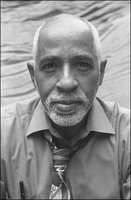 what would lead three popular teenage boys to trade in bright futures for one brutal crime? from tacoma, washington, the three boys daniel harris, 18, cyril walrond, 17, and jarelle marshall, 16, were each charged with first-degree murder in the beating death of 55-year-old dien kien huynh. the three boys allegedly went on a crime spree that night, robbing a couple earlier in the evening, and then robbing huynh in his own front yard and beating him with a hammer. huynh died two days later.
what would lead three popular teenage boys to trade in bright futures for one brutal crime? from tacoma, washington, the three boys daniel harris, 18, cyril walrond, 17, and jarelle marshall, 16, were each charged with first-degree murder in the beating death of 55-year-old dien kien huynh. the three boys allegedly went on a crime spree that night, robbing a couple earlier in the evening, and then robbing huynh in his own front yard and beating him with a hammer. huynh died two days later.
all three of the boys were athletes, members of the football and track teams at mt. tahoma high school. walrond and harris had both earned college scholarships from the washington state achievers program, a scholarship fund set up by bill and melinda gates to reward “talented, low-income students who have overcome difficult circumstances and who are motivated to attend college.”
the tacoma news tribune reports:
Ten days after Huynh was attacked, Walrond served on a panel of high school students at a Tacoma summit on raising the standardized test scores of minority students. He told participants at the University of Puget Sound that he plans to study pre-med and psychology at the University of Washington this fall.
“In the community I live in, not many people will make it,” said Walrond, whose father, Greg, serves as a youth track team coach in Tacoma. “I take it upon myself to be the light in the darkness.”
if these boys are convicted, they will each face at least 20 years in prison. the light walrond speaks of will have been extinguished in many lives — the victim, the three perpetrators, the families and friends that love them. more than 100 people, including dozens of students from mt. tahoma high school, attended the arraignment. many of them sobbed as the boys appeared before the judge.
as someone who studies delinquency and has spent time with violent juvenile offenders, cases like this are the most difficult for me to understand. for young people with a real investment in and hope for their futures, what makes them choose to risk it all in one impetuous night?
obviously there are other cases where youths of privilege commit terrible crimes — the glen ridge case chronicled in our guys, whatever really happened with the duke lacrosse team — but this one strikes me as particularly unfortunate. as walrond pointed out, he was a success story in his community, a role model for others. now, if convicted, these boys will spend much of their young lives in prison and, if and when they ever get out, the world will be a very different, darker place for each of them.




